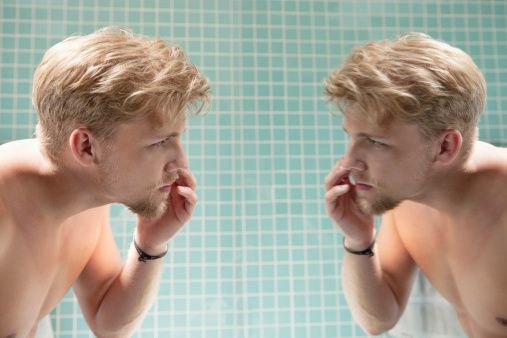The Link Between Acne And Endocrine Instablity: Face Issues Aren't Just Skin Deep

The skin is the body’s largest organ and can be the looking glass into the issues brewing within. New research suggests that a person’s endocrine system — the system responsible for regulating the body’s hormones — may have a profound effect on the appearance of our skin.
According to two studies published in JAMA Dermatology Wednesday, men with higher levels of insulin resistance were more likely to have the presence of acne. Likewise, women with suspected polycystic ovarian syndrome (PCOS) were also more likely to have acne. Both conditions are intricately tied to dysfunctioning hormones.
In the first study, a team led by Dr. Dipankar De, a member of the Postgraduate Institute of Medical Education and Research in Chandigarh, India, studied 200 male subjects — 100 with acne and 100 without. Twenty percent of men with acne reported some degree of insulin resistance, compared to only 11 percent of those without. A similar search for a connection between metabolic syndrome and acne, however, turned up fruitless. And despite the increased chance of acne among insulin-resistant men, the severity of acne wasn't influenced by the presence of either insulin resistance and metabolic syndrome.
Insulin resistance is a condition where the body, for some reason, begins responding less and less to insulin, which is responsible for regulating our blood sugar. This weaker response leads to higher levels of both insulin and blood sugar, causing widespread havoc throughout the body. Though treatable in its early stages, it can eventually escalate to type 2 diabetes. The science on what causes insulin resistance isn't conclusive, though some experts believe that obesity could be a trigger. Because the condition can be so damaging, De and his colleagues concluded that acne patients be followed up "for a prolonged time to determine whether they develop conditions associated with insulin resistance."
In the second study, 61.2 percent of women confirmed to have PCOS, which includes symptoms such as weight gain, irregular menstrual cycles, and excessive insulin, also had acne, compared to only 40 percent of women who failed to meet the criteria for PCOS. Confirmed PCOS sufferers were also more likely to develop a condition known as hirsutism, or male-patterned hair growth on their face, chest, and back, and acanthosis nigricans (AN), or dark skin splotches. Though acne was certainly more prevalent among PCOS patients, with 91.7 percent of women who fit the criteria for PCOS (276 in total) experiencing at least one physical sign of acne, the researchers concluded it wasn't a distinguishing factor.
"This study demonstrates that hirsutism and AN are the most useful cutaneous indicators of PCOS to distinguish patients most at risk for having PCOS among a suspected population," said the study authors, led by Dr. Kanade Shinkai of the University of California, San Francisco.
In an accompanying editorial to both studies, Dr. Rachel V. Reynolds of Beth Israel Deaconess Medical Center wrote that dermatologists need to go beyond just identifying surface patterns. "Thoughtful evaluation of even the most common of skin disorders provides the opportunity to take a deeper dive into the understanding of our patients' general physical and emotional well-being," she wrote.
In America alone, acne affects 40 to 50 million Americans, so before doctors prescribe remedies or treatments, it’s important for the issues to be looked at in greater depth.
Sources:
Schmidt T, Khanijow K, Cedars, M. Cutaneous Findings and Systemic Associations in Women With Polycystic Ovary Syndrome. JAMA. 2015.
Nagpal M, De A, Handa S. Insulin Resistance and Metabolic Syndrome in Young Men With Acne. JAMA. 2015.
Published by Medicaldaily.com



























